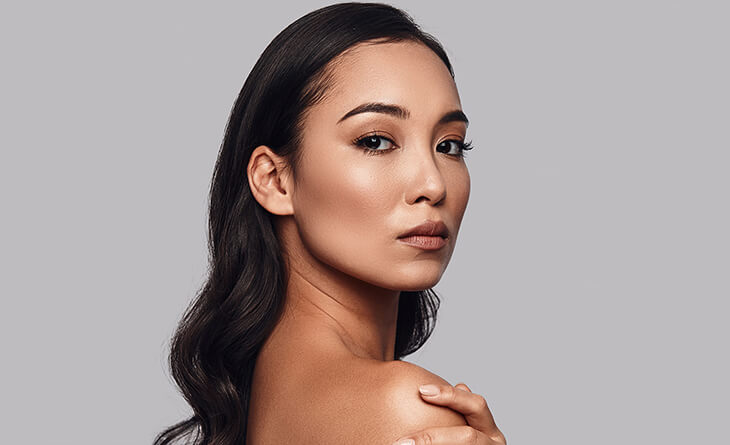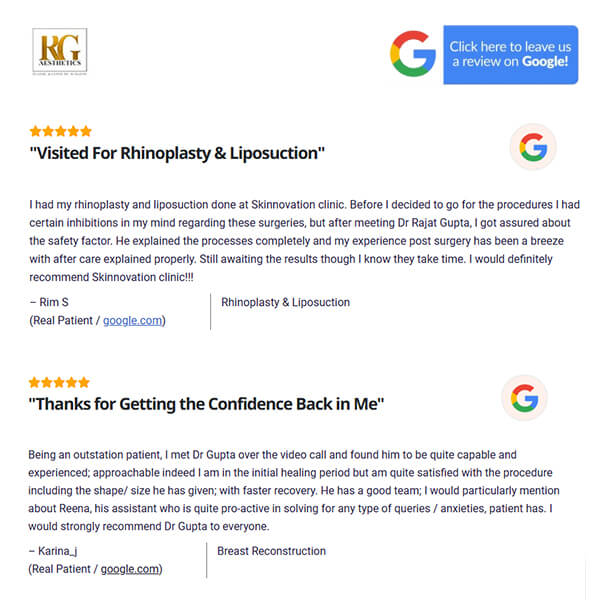How is Asian Blepharoplasty Done?
They say the eyes are the windows to the soul, but what if those windows don’t quite reflect the true essence within? For many individuals, the shape of their eyelids can be a source of frustration, cultural identity, and even self-esteem.
Fortunately, there’s a solution: an Asian blepharoplasty procedure. This cosmetic procedure, also known as double eyelid surgery, is designed to create a crease in the eyelid for those who don’t have one naturally. Asian blepharoplasty redefines the aesthetic and accentuates the eyes’ allure.
But how exactly is Asian blepharoplasty performed? What does the procedure entail, and what are the expected results? Keep reading to get all your questions answered.
What is Asian Blepharoplasty?
Asian blepharoplasty, also known as double eyelid surgery, is a cosmetic procedure sought by individuals born without a natural crease in their eyelids. Double eyelid surgery in Delhi is common for these individuals to be the only ones in their family without an eyelid crease.
Some choose to undergo this surgery to achieve a similar appearance to others in their family. In contrast, others simply wish to enhance their physical features and transform the look of their eyes. Some may desire a more convenient way to apply eye makeup or achieve a wide-eyed appearance.
The procedure involves making a small incision along the eyelid, creating a crease in the skin, and then suturing the skin to maintain the new crease.
While the procedure is relatively safe, there are risks associated with any surgery, including infection, bleeding, and scarring.
Have questions or want to get started? We are ready to help you with a smile!
How is Asian Blepharoplasty Surgery Done?
Asian blepharoplasty procedure involves various techniques depending on your desired outcome and the surgeon’s expertise.
The process begins with an initial consultation with the plastic surgeon. During this consultation, the surgeon will assess your individual eye anatomy, discuss your goals and expectations, and explain the different techniques and options available to you.
Next, local or general anaesthesia will be administered to ensure your comfort throughout the surgery. The choice of anaesthesia depends on the surgeon’s recommendation and your preferences.
The surgeon will carefully determine the desired location and shape of the new eyelid crease. The incision can be made using various techniques, including the traditional incisional method, suture or non-incisional method.
Incisional Method
The incisional method for Asian eyelid surgery Delhi involves creating a small incision along the predetermined location of the eyelid crease. This incision is typically made using a scalpel or laser, and excess skin, fat, and tissue may be removed, if necessary, to create the desired crease.
Once you are properly anaesthetised, the surgeon carefully plans and marks the desired location and shape of the eyelid crease. This step is crucial as it determines the final outcome of the Asian blepharoplasty procedure.
Next, a precise incision is made along the marked crease line on the upper eyelid. The incision length depends on various factors, including eye anatomy and the desired outcome. The surgeon skillfully removes a precise amount of excess skin, fat, and sometimes muscle from the eyelid. This tissue removal allows for a well-defined crease and a more prominent eyelid fold.
After the necessary adjustments have been made, the surgeon proceeds to suture the incision. Fine sutures are carefully placed within the underlying tissues to provide stability and support. The external incision is closed either with sutures or specialised skin adhesive, which minimises scarring and promotes optimal healing.
Following the double eyelid surgery in Delhi, you will receive post-operative care instructions from your surgeon. This may include using prescribed eye drops or ointment to prevent infection and promote healing. Cold compresses can be applied to reduce swelling and discomfort. It is important to follow these instructions diligently to ensure a smooth recovery.
Recovery time can vary, but most individuals experience swelling and bruising in the first few days following the surgery. These effects gradually subside over a few weeks, and you will begin to see the final results taking shape.
Attend follow-up appointments with your surgeon to monitor your progress and ensure the healing process is proceeding as expected. Your surgeon will guide you when you can resume normal activities and apply makeup.
Suture Method
The suture method, also known as the non-incisional method, is preferred by individuals who desire a less invasive approach and a shorter recovery time compared to the incisional method. This technique involves using sutures to create a natural-looking double eyelid crease without making an external incision.
During the Asian blepharoplasty procedure, anaesthesia is administered to numb the area, ensuring your comfort throughout the surgery. The surgeon then creates the double eyelid crease by strategically placing small sutures within the eyelid tissue.
The sutures are inserted through tiny puncture holes made along the predetermined crease line in the upper eyelid. The placement and tension of the sutures are carefully adjusted to achieve the desired height and shape of the crease. This technique allows for customisation and flexibility, as the surgeon can make real-time adjustments during the double eyelid surgery in Delhi to ensure optimal results.
Once the sutures are in place, they act as temporary anchors that hold the eyelid tissue in position, creating the double eyelid fold. Over time, scar tissue forms around the sutures, reinforcing the crease and maintaining its appearance even after the sutures are removed.
One of the advantages of the suture method of the Asian blepharoplasty procedure is its relatively minimal downtime. Since there are no external incisions, there is typically less swelling, bruising, and scarring than the incisional method. Recovery time is generally faster, and most individuals can resume their regular activities within a shorter period.
It’s important to note that the longevity of the double eyelid created by the suture method can vary. Some individuals may experience long-lasting results, while others may require additional suture adjustments or opt for a more permanent procedure in the future.
During a consultation with a qualified plastic surgeon, they will assess your eyelid anatomy, discuss your aesthetic goals, and determine if the suture method suits you. They will explain the technique’s benefits, potential risks, and limitations to ensure you have realistic expectations and make an informed decision for Asian eyelid surgery Delhi.
How to Prepare for Blepharoplasty Surgery?
Preparing for an Asian blepharoplasty procedure involves several important steps to ensure that you are physically and mentally ready for the procedure. Here are some general guidelines to follow before undergoing blepharoplasty surgery:
Consult with a Qualified Surgeon: Schedule a consultation with a qualified plastic surgeon specialising in double eyelid surgery in Delhi. Discuss your goals, expectations, medical history, and any concerns you may have. The surgeon will evaluate your eye anatomy, assess your candidacy for the procedure, and provide personalised recommendations.
Quit Smoking and Avoid Certain Medications: It is highly recommended to stop smoking at least a few weeks before surgery, as smoking can impair healing and increase the risk of complications. Your surgeon will provide guidance on which medications to avoid before the surgery, such as blood thinners, anti-inflammatory drugs, and herbal supplements that may increase bleeding.
Follow Pre-operative Instructions: Your surgeon will provide specific pre-operative instructions tailored to your needs. These may include guidelines on fasting before surgery, avoiding certain skincare products or makeup, and instructions on when to stop eating or drinking before the Asian blepharoplasty procedure.
Prepare Your Recovery Space: Create a comfortable and conducive environment for your recovery. Ensure you have a clean, quiet space at home where you can rest and relax. Stock up on necessary supplies, such as prescribed medications, cold compresses, clean towels, and comfortable clothing.
Arrange Transportation and Support: Plan for someone to accompany you to and from the surgical facility on the day of the Asian eyelid surgery Delhi, as you may be unable to drive after being under anaesthesia. Having someone available to assist you during the initial recovery period at home is also helpful.
Make Arrangements for Post-operative Care: Discuss post-operative care instructions with your surgeon and make necessary arrangements. This may include scheduling follow-up appointments, organising transportation for future visits, and understanding how to care for your incisions and manage any discomfort during the recovery period.
It’s important to closely follow your surgeon’s pre-operative instructions and openly communicate any concerns or questions you may have. By adequately preparing for blepharoplasty surgery, you can help ensure a safer and more comfortable experience and maximise your chances of achieving the desired results.

Wrapping Up!
The Asian blepharoplasty procedure is a transformative procedure that can enhance the appearance of the eyes and create a more defined eyelid crease. Whether you seek to create a crease in your eyelids or reduce the appearance of sagging skin and wrinkles, various techniques are available to meet your needs.
Dr Rajat Gupta is a board-certified plastic surgeon with extensive expertise in facial plastic surgery, including Asian blepharoplasty. With his exceptional surgical skills and artistic vision, Dr Rajat Gupta can help you achieve the natural, beautiful results you desire.
Don’t let concerns about your eyelids’ appearance hold you back. Contact Dr Rajat Gupta today to schedule a consultation.
Dr. Rajat Gupta
MBBS, MS, DNB(Gen. Surg.),
DNB (Plastic Surgery)
Dr. Rajat Gupta is a board certified plastic surgeon in India with 13 years of experience to back his expertise in the domain of aesthetic surgeries.
Having completed his training from Maulana Azad Medical College and equipped with a thorough understanding of aesthetic needs of people, Dr. Gupta strives to offer the best remedies and cosmetic procedures outfitted with the latest technology to the aspirants in India and across the globe. To book an appointment, call: +91-9251711711 or email: contact@drrajatgupta.com



